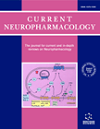
Full text loading...
Many neurological diseases can lead to cognitive impairment in patients, which includes dementia and mild cognitive impairment and thus create a heavy burden both to their families and public health. Due to the limited effectiveness of medications in treating cognitive impairment, it is imperative to develop alternative treatments. Electroacupuncture (EA), a required method for Traditional Chinese Medicine, has the potential treatment of cognitive impairment. However, the molecular mechanisms involved have not been fully elucidated. Considering the current research status, preclinical literature published within the ten years until October 2022 was systematically searched through PubMed, Web of Science, MEDLINE, Ovid, and Embase. By reading the titles and abstracts, a total of 56 studies were initially included. It is concluded that EA can effectively ameliorate cognitive impairment in preclinical research of neurological diseases and induce potentially beneficial changes in molecular pathways, including Alzheimer’s disease, vascular cognitive impairment, chronic pain, and Parkinson’s disease. Moreover, EA exerts beneficial effects through the same or diverse mechanisms for different disease types, including but not limited to neuroinflammation, neuronal apoptosis, neurogenesis, synaptic plasticity, and autophagy. However, these findings raise further questions that need to be elucidated. Overall, EA therapy for cognitive impairment is an area with great promise, even though more research regarding its detailed mechanisms is warranted.

Article metrics loading...

Full text loading...
References


Data & Media loading...

